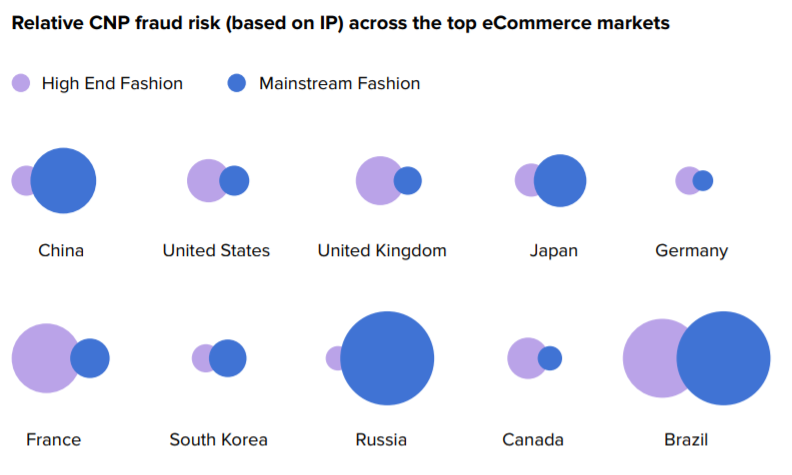How Fashion Retailers Can Overcome Barriers to Foreign Expansion
The benefits of effective international expansion are clear. Businesses that succeed in their efforts to enter foreign markets will have access to a much broader customer base and will get more opportunities to scale their operations and build a global brand.
One industry where the advantages of a cross-border presence are particularly clear is fashion. Last year’s State of Fashion report from McKinsey and The Business of Fashion noted that 2018 marked an “important tipping point” for the industry, with more than half of apparel and footwear sales originating from outside Europe and North America for the first time. The main sources of growth were emerging markets in regions like Latin America and Asia-Pacific.
The same report from this year predicted that, in 2019, Greater China will “for the first time in centuries overtake the US as the world’s largest fashion market”.
With Europe and North America no longer the dominant forces in fashion retail, modern brands need to have a truly international focus to achieve major success in the industry today.
Expanding overseas can present its own unique challenges, so it’s vital to do your research and prepare thoroughly to succeed on a global level.
Know Your Market
One of the first and most important steps on the journey to international success in fashion retail is building up an in-depth understanding of each market you enter, and the strategies most likely to deliver results there.
Targeted market research can help you become more familiar with the locations on your growth radar, encompassing everything from scope for expansion in certain destinations, to local competitor activity.
It’s also important to create a detailed, data-driven picture of your audience, based on key factors such as:
– Their most important priorities when shopping online (price, payment security, fast delivery or good customer service, for example)
– What they want and expect from fashion brands and retailers
– How they prefer to communicate with businesses online
Armed with this information, you can come up with an informed strategy to achieve engagement with your customers, build relationships, and give them what they want.
When you are operating internationally, effective use of language is more important than ever when it comes to connecting with your audience. Properly translated and localised content is vital to show customers you are in tune with their buying needs and interests.
Localisation also extends to how you design your product range and how you describe and promote certain items at particular times of the year. Merchandising should always reflect seasonal demands in individual markets, for example, and product descriptions should include local sizing information.
Security
It goes without saying that strong payment security and fraud protection is an essential part of ecommerce, for businesses and for consumers. Trading across international borders can add extra layers of complexity where security is concerned.
As security software firm Riskified noted in its Ecommerce Fashion Report 2019, cross-border card transactions have to pass through a number of financial entities for approval before merchants can review them, raising the likelihood of the payment being declined.
The report authors write: “Many businesses are wary of the card-not-present [fraud] risks associated with international transactions. But in the same way that retailers can tailor their site for specific audiences, they can fine-tune fraud review to account for variation in shopping behaviour across countries.”

Source: Riskified
Riskified highlighted how relative rates of fraud attacks in the high-end and mainstream fashion segments can vary significantly between countries. However, it also stressed that individual orders “should be considered on a case-by-case basis”.
Another significant consideration is reshipping, which is often used by fraudsters, but is also used by legitimate customers who can’t access or afford international shipping. Retailers should therefore be wary of blocking or automatically declining reshippers.
Fulfilment and Delivery
To a large extent, achieving success in international fashion retail depends on understanding the markets where you do business, your customers and their needs. This extends to the fulfilment and delivery phase of the business/consumer relationship, which can be vital in shaping audience opinions of your brand and their dealings with you.
While some customers might be willing to wait a few days for their items if it means getting free delivery, others will be prepared to pay a premium to get their purchases as quickly as possible.
When you’re operating internationally, fulfilment and delivery can be a highly complex and costly part of doing business, so it’s important that you understand your customers’ priorities well enough to plan your investment and manage resources with maximum efficiency.
This will be among the topics discussed at eTail Europe 2019, where Christophe Pecoraro, managing director of PFS Europe, will talk about non-traditional fulfilment methods such as pop-up distribution centres, among other subjects.
Locaria’s chief operating officer, Lindsay Hong, will also be among the speakers at the event, which will come to the Queen Elizabeth II Conference Centre in London on June 18th and 19th.
To find out more about how Locaria can help your business navigate the challenges of international expansion, give us a call on +44 (0)20 3948 6800.



